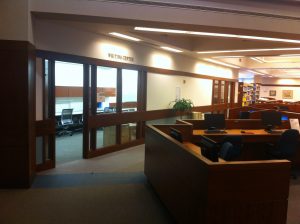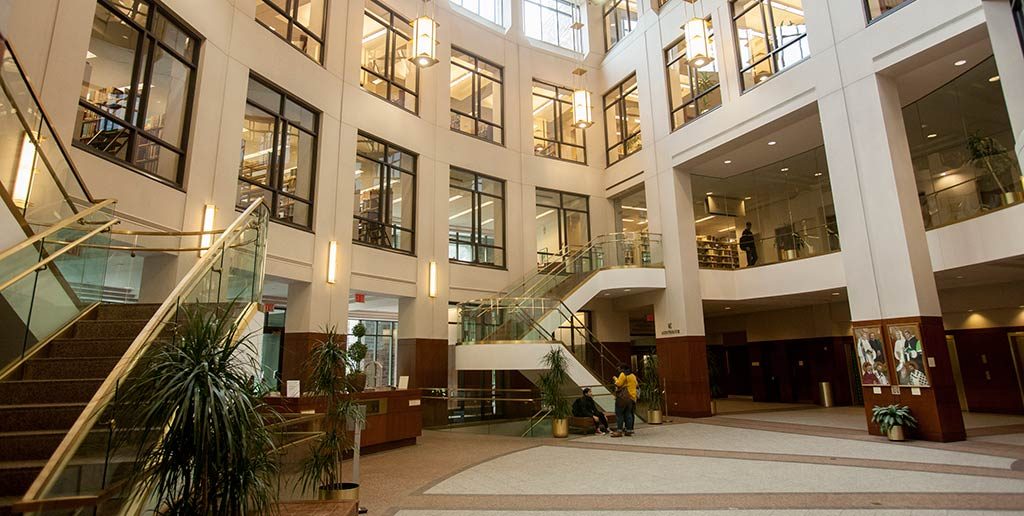The Rose Hill Writing Center, which offers free writing assistance to undergraduate and graduate students in all majors, opened its doors Feb. 12 at a bigger, brighter, and more technologically advanced location in William D. Walsh Family Library.
 The move represents the fruition of two years of planning and collaboration by writing center and library staff, the Department of English, Fordham Facilities Management, John P. Harrington, Ph.D., dean of Faculty of Arts and Sciences, and Michael E. Latham, Ph.D., former dean of Fordham College at Rose Hill.
The move represents the fruition of two years of planning and collaboration by writing center and library staff, the Department of English, Fordham Facilities Management, John P. Harrington, Ph.D., dean of Faculty of Arts and Sciences, and Michael E. Latham, Ph.D., former dean of Fordham College at Rose Hill.
The new space, designed by architect Joel Napach of the Napach Design Group, replaces three former study rooms in the reference area on Walsh’s ground floor. In addition to elegant fixtures that cast perfect reading light, it features spacious work stations and new computers, as well as one free-standing station that can be raised and lowered to accommodate students in wheelchairs.
An expansive conference table and wall-mounted LCD screen will now allow for teleconferencing with off-campus speakers and seminars, as well as real-time collaborations with the Lincoln Center Writing Center.
For Anna Beskin, a doctoral candidate in English and director of the Rose Hill Writing Center (which formerly shared space with the Department of Economics in Dealy Hall), the new location offers greater accessibility and increased visibility.
“It’s a huge sign of support for what we do at the writing center,” she said. “We are a University-wide resource and we can be in a location that is central to the Rose Hill student base where we can be so much more useful to a greater number of students.”
Linda LoSchiavo, director of University Libraries, worked hard to ensure that the center integrated seamlessly into the existing library structure, with matching wood tones, paint colors, and signage. Walsh Library has also dedicated a portion of its entrance lobby as a waiting area for the center’s students.
This physical integration reflects a natural correspondence between the goals of both the writing center and the library. The resources that students need for a wide range of projects—from freshman composition essays to longer research papers, to statements of purpose for graduate school applications—exist just outside the writing center’s doors.
“Once students work with a tutor and realize they have more work to do,” said Beskin, “they can see a reference librarian, ask questions, or search for books; they are already in the right space.”
The writing center’s new home in Walsh Library encourages students to see the interconnections between sound academic writing and information literacy and it helps to foster their skills in both. LoSchiavo said it will go a long way to help foster the Jesuit tradition of developing “perfect eloquence” that is a guiding principle of Fordham’s core curriculum.
“We’ve got a program that’s striving to develop students in their oral and written proficiencies, and now we’ve got the center and the library all under one roof. And to me that’s really a beautiful thing,” she said.
Those interested can sign up for tutoring sessions on the writing center’s website: www.fordhamwc.com
–Nina Heidig

